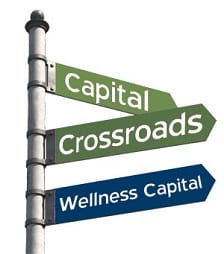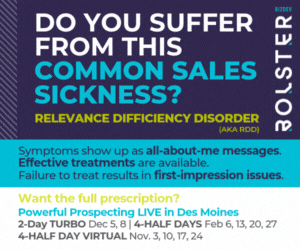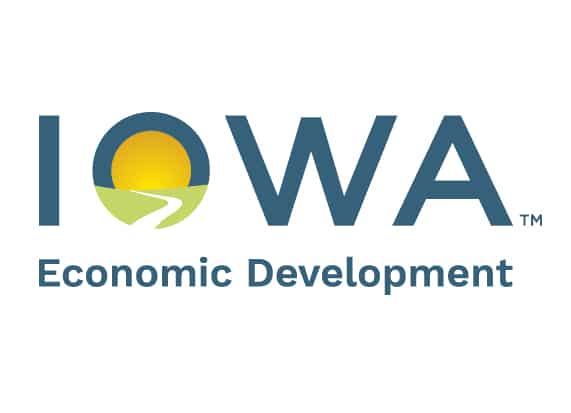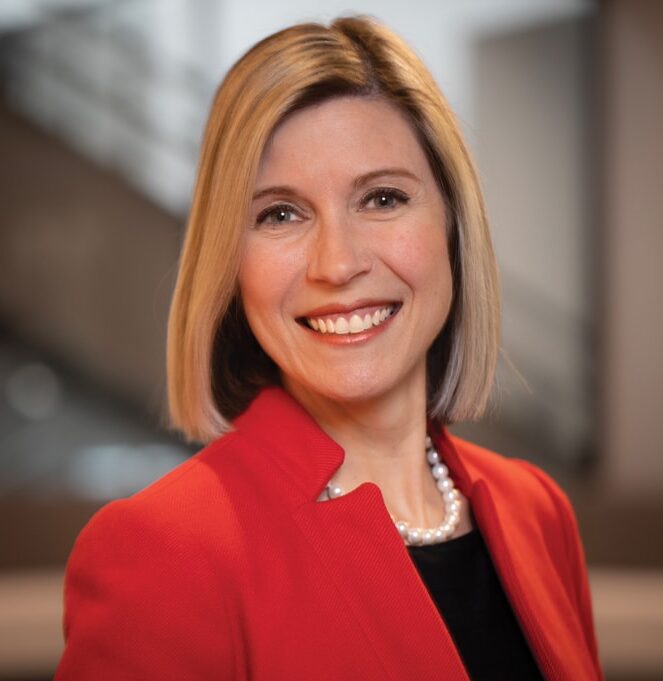Capital Crossroads: Wellness Capital
Wellness Capital seeks to catalog, identify gaps in local resources

What is Capital Crossroads:
Capital Crossroads is a regional planning effort headed up by leaders in Greater Des Moines and surrounding communities.
What is Wellness Capital:
The Wellness Capital focuses on developing a comprehensive wellness campaign to create economic opportunities in Central Iowa.
Sheila Laing and Laura Jackson have worked together so often on various projects that they occasionally finish each other’s sentences.
Laing, vice president of human resources for Hy-Vee Inc., and Jackson, executive vice president of health care strategy and policy at Wellmark Blue Cross and Blue Shield, co-chair the Wellness Capital portion of Capital Crossroads, a comprehensive vision plan for Greater Des Moines. As leaders in companies that conduct business statewide, they have witnessed firsthand the increasing recognition that wellness plays a key role in economic development.
“When Sheila and I were invited to be co-chairs of the Wellness Capital, a couple of things made complete sense to us,” Jackson said. “First of all, it was a very holistic plan that incorporated really every facet of how you live, work and play in a community. And I think the second natural fit was the Healthiest State Initiative announced by the governor; Sheila and I have been pretty well entrenched in that effort.”
Launched in August 2011, the Healthiest State Initiative is a campaign aimed at making Iowa the healthiest state in the nation. The barometer for that initiative is the Gallup-Healthways Well-Being Index, an ongoing nationwide survey of Americans that gauges the healthfulness of people’s lifestyle choices by how they respond to questions about their diets, exercise regimens and stress levels. Coupled with that program is the Blue Zones program, an effort to bring lifestyle practices from some of the longest-lived areas of the world to Iowa communities. Both Hy-Vee and Wellmark are primary sponsors of those initiatives.
Because those and similar projects have already begun to address wellness in Iowa, the Wellness Capital committee has been careful not to duplicate efforts and plans to capitalize on the work that’s already been done, the co-chairs said.
According to the Capital Crossroads final plan document, “A regional wellness initiative would serve many capitals: business, social, human, environmental, physical, governmental and possibly even cultural. However, it is the potential to leverage a comprehensive wellness campaign to create economic opportunities in Central Iowa, change perceptions of the region through marketing of the initiative and its components, and retain and attract businesses and talent in health and wellness and other target sectors that could have the most dynamic local impact.”
One of the committee’s first major tasks was to catalog all of the wellness initiatives that are already under way in Polk County, the surrounding counties and the state of Iowa. Working with committee members representing organizations from across the state, that task has already been completed, Laing said.
This summer, the Wellness Capital committee will conduct a survey of business organizations and chambers of commerce statewide to gain a better understanding of existing wellness resources and to identify where gaps exist. The survey is being developed with assistance from David P. Lind & Associates LC in Clive, which specializes in the measurement and assessment of employee benefits trends and data.
“What we hope to do is not just get a sample and some trend information; it’s more of a needs assessment,” Jackson said. “So the more (participants) we can have, the better we can match resources and figure out what to add in capacity. And we’re really trying to satisfy a lot of people’s (data) needs all at one time. We had several folks in our meeting who were going to do a survey anyway. So we basically said, let’s agree on a core set of questions that would resolve all of our need-to-know items, so that would be one less survey that an employer would be asked to fill out.”
“And,” Laing said, “in the spirit of the Healthiest State Initiative, we want to share the data that we get. It isn’t going to be something that’s owned by the (Greater Des Moines) Partnership or Capital Crossroads. We want every entity that could use that data and do something with it to be able to use it.”
Another significant goal of the Wellness Capital is to develop a major kickoff event for the regional wellness initiative within the next year or two. “So that would be kind of the next big lift, to scope that based on what we know and figuring out where we head from there,” Laing said.
“Maybe the needs and the resources will line up perfectly, and it’s just a matter of building awareness,” Jackson added. “Or maybe we’ll see that there’s a need for something we don’t have.”
The more the committee has met, the clearer it’s become how closely intertwined the various capitals are, she said. For instance, when people start talking about environmental issues, that ties in with parks and recreation, which naturally connects with wellness.
“I think the challenge, in a good way, is figuring out how it all fits together,” Jackson said. “It’s a very comprehensive plan, which is nice to see because it would be easy to just have a wellness initiative.”
THE BREAKDOWN
The Wellness Capital section of the Capital Crossroads final plan document lays out three subsections. Here is a summary of those steps as the plan moves into the implementation process.
Catalog & Advocate
• The first step in developing a comprehensive regional wellness initiative would be consensus-building among key partners. Inherent in this effort would be the need to identify the key public, private and not-for-profit constituents with the capacity and interest to be involved in a program of this type. The public at large must also be made to understand the benefits of a wellness initiative and why they should support it.
• Research and catalog existing wellness-related efforts and organizations in Central Iowa. The development of a formal wellness initiative must start with an understanding of existing programmatic, personnel and resource capacity.
• Assess potential regional buy-in for development of a comprehensive, coordinated and measurable wellness initiative. Many Central Iowa stakeholders likely cannot differentiate between the concepts of health and wellness, not to mention grasp the strategies and sub-strategies that would make up a regional wellness initiative. Local leaders should explore whether these notions are of interest to the broader community by initiating discussion on what constitutes wellness and focusing on the topic of Blue Zones as a framework for discussion of these issues.
Define & Design
• Based on initial information-gathering, regional outreach and advocacy efforts, the parameters of the wellness initiative should have come into clearer focus. Design of the formal programmatic components of the initiative should be a collaborative effort among the key stakeholders engaged in implementing and managing the program and measuring its impact.
• Form a program design committee to create the specifications of the wellness initiative. Empaneling top representatives of constituencies critical to the effective design and development of the regional wellness initiative will ensure that the program reflects existing and best practice efforts.
• Finalize the wellness initiative and activate the program. Once comprehensive community outreach and engagement have been performed and parameters and programmatic elements for the wellness intiative selected, the next step is the public announcement and rollout of the campaign.
Market & Measure
• Once the wellness initiative has been designed, metrics to assess its performance and outcomes must be developed. The initiative should also be leveraged to change perceptions about Central Iowa and appeal to companies, investors and talent attracted to the philosophy and implementation of regional wellness programming.
• Develop performance measurements and outcome metrics to assess the efficacy of the wellness initiative. A campaign as comprehensive, multifaceted and ambitious as the regional wellness initiative must be consistently and accurately measured to inform program operators, participants, funders and the public at large of its progress and success.
• Market Central Iowa’s wellness initiative to the nation and world. The external misperceptions of Central Iowa’s key assets, opportunities and resources was a common theme of Capital Crossroads public input. Fully leveraging a transformative campaign like the regional wellness initiative to change opinions and attitudes about Central Iowa can generate direct benefits in terms of attraction and retention of jobs, talent and investment.










